African-American Jews are people who are both African American and Jewish. African-American Jews may be either Jewish from birth or converts to Judaism. Many African-American Jews are of mixed heritage, having both non-Jewish African-American and non-Black Jewish ancestors. Many African-American Jews identify as Jews of color, but some do not. Black Jews from Africa, such as the Beta Israel from Ethiopia, may or may not identify as African-American Jews.
Black Hebrew Israelites are a new religious movement claiming that African Americans are descendants of the ancient Israelites. Some sub-groups believe that Native and Latin Americans are descendants of the Israelites as well. Black Hebrew Israelites combine elements to their teaching from a wide range of sources to varying degrees. Black Hebrew Israelites incorporate certain aspects of the religious beliefs and practices of both Christianity and Judaism, though they have created their own interpretation of the Bible, and other influences include Freemasonry and New Thought, for example. Many choose to identify as Hebrew Israelites or Black Hebrews rather than Jews in order to indicate their claimed historic connections.
Jews in Philadelphia can trace their history back to Colonial America. Jews have lived in Philadelphia since the arrival of William Penn in 1682.

Mikveh Israel Cemetery is the oldest Jewish cemetery in Philadelphia, Pennsylvania, giving evidence of a settled community as early as 1740. A number of outstanding patriots, pioneers, and other notables of the Jewish faith who made important contributions to the history and freedom of America during the Colonial and Revolutionary period were interred here, and for this reason, in 1959, by an act of Congress, the burial ground was designated as a unit of the Independence National Historical Park, while continuing to be maintained by the sponsoring Congregation Mikveh Israel. The cemetery was certified by the Philadelphia Historical Commission, and in 1971, it was listed on the National Register of Historic Places.

Isaac Leeser was an American Orthodox Jewish religious leader, teacher, scholar and publisher. He helped found the Jewish press of America, produced the first Jewish translation of the Bible into English, and helped organize various social and educational organizations. He is considered one of the most important nineteenth century American Jewish personalities. He was "fiercely opposed" to Reform Judaism and was regarded as one of the most important "orthodox" rabbis of his era. Leeser is regarded as a forerunner by both Modern Orthodox Judaism and Conservative Judaism.

Congregation Mikveh Israel, is a Sephardic Orthodox Jewish synagogue located at 44 North Fourth Street in Philadelphia, Pennsylvania, in the United States. The congregation traces its history from 1740. Mikveh Israel is a Spanish and Portuguese congregation that follows the rite of the Amsterdam esnoga. It is the oldest synagogue in Philadelphia, and the longest running in the United States.
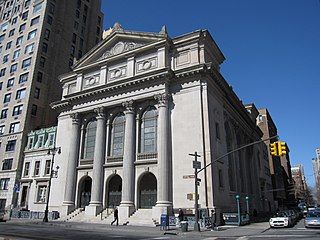
The Congregation Shearith Israel, often called The Spanish and Portuguese Synagogue, is an Orthodox Jewish synagogue located at 2 West 70th Street, at Central Park West, on the Upper West Side of Manhattan in New York City, New York, United States.

Sabato Morais was an Italian-American rabbi of Portuguese descent, leader of Mikveh Israel Synagogue in Philadelphia, pioneer of Italian Jewish Studies in America, and founder of the Jewish Theological Seminary, which initially acted as a center of education for Orthodox Rabbis.

Jewish views on slavery are varied both religiously and historically. Judaism's ancient and medieval religious texts contain numerous laws governing the ownership and treatment of slaves. Texts that contain such regulations include the Hebrew Bible, the Talmud, the 12th-century Mishneh Torah by rabbi Maimonides, and the 16th-century Shulchan Aruch by rabbi Yosef Karo.
The history of the Jews in Omaha, Nebraska, goes back to the mid-1850s.
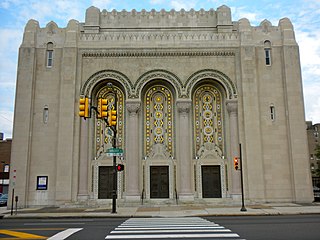
Congregation Rodeph Shalom, is an historic Reform Jewish congregation and synagogue located at 615 North Broad Street, Philadelphia, Pennsylvania, in the United States. Established in 1795, it is the oldest Ashkenazic synagogue in the Western Hemisphere. It is noted historically for its leadership of the Reform movement among American Hebrew congregations, for its spiritual influence upon international Jewry, and for its unique 1927 Byzantine and Moorish Revival synagogue building, with Art Deco finishes, on North Broad Street, listed on the National Register of Historic Places since 2007.
African Americans and Jewish Americans have interacted throughout much of the history of the United States. This relationship has included widely publicized cooperation and conflict, and—since the 1970s—it has been an area of significant academic research. Cooperation during the Civil Rights Movement was strategic and significant, culminating in the Civil Rights Act of 1964.
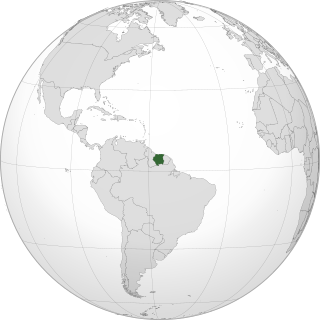
The history of the Jews in Suriname starts in 1639, as the English government allowed Spanish and Portuguese Jews from the Netherlands, Portugal and Italy to settle the region, coming to the old capital Torarica.

Jewish immigrants arrived in the Oregon Territory as early as 1849, before Oregon was granted its statehood in 1859. The first Jews who settled there were mainly of German origin, and largely practiced Reform Judaism. By the mid-1850s, Oregon had a number of Jewish communities in small towns, including Jacksonville in southern Oregon, and later Burns, Heppner, and Baker in eastern Oregon. Portland, the state's largest city, served as a hub for Jews due to its larger Jewish community. The Reform Congregation Beth Israel, which founded the state's first synagogue in Portland in 1861, is one of the oldest Jewish congregations in the western United States, and its cemetery has the distinction of being the oldest continually running Jewish cemetery in the country.

Pamela S. Nadell is an American historian, researcher, and author focusing on Jewish history. Former President of the Association for Jewish Studies, she currently holds the Patrick Clendenen Chair in Women's and Gender history at American University. Nadell has focused her research on Jewish women and their role within Jewish history as well as in shaping the history of the United States through their role in various social and political movements.
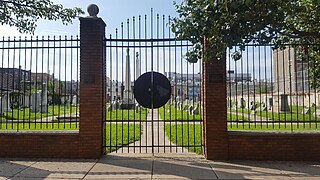
The Mikveh Israel Cemetery is a Jewish cemetery known as the Federal Street Burial Ground and located at 11th and Federal Streets in the Passyunk Square neighborhood of South Philadelphia. It was first called Beth Hahayim. It is one of three cemeteries belonging to Congregation Mikveh Israel, Philadelphia's oldest synagogue.
Peter Still, was a former slave who secured his own freedom in 1850 and subsequently collected enough money to purchase the freedom of his wife and three children in 1854. His efforts were documented in the book: The kidnapped and the ransomed; being the personal recollections of Peter Still and his wife "Vina," after forty years of slavery, which his biographer Kate E. R. Pickard published in 1856.
Racism in Jewish communities is a source of concern for people of color, particularly for Jews of color. Black Jews, Indigenous Jews, and other Jews of color report that they experience racism from white Jews in many countries, including the United States, Canada, the United Kingdom, France, Kenya, South Africa, and New Zealand. Sephardi and Mizrahi Jews also report experiences with racism by Ashkenazi Jews. The centering of Ashkenazi Jews is sometimes known as Ashkenormativity. In historically white-dominated countries with a legacy of anti-Black racism, such as the United States and South Africa, racism within the Jewish community often manifests itself as anti-Blackness. In Israel, racism among Israeli Jews often manifests itself as discrimination and prejudice against Sephardi and Mizrahi Jews, Ethiopian Jews, African immigrants, and Palestinians. Controversially, some critics describe Zionism as racist or settler colonial in nature.
Billy Simmons was an African-American Jew from Charleston, South Carolina, one of the few documented Black Jews living in the Antebellum South. Simmons was a scholar in both Hebrew and Arabic.
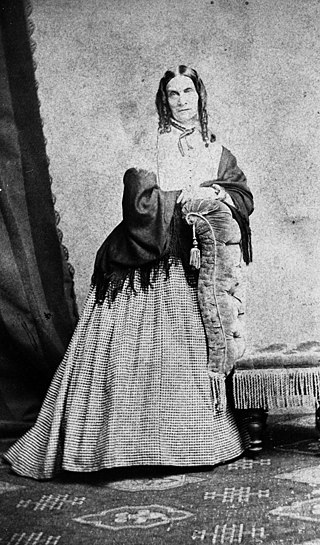
Emma Mordecai was an American educator, diarist, slave owner, outspoken supporter of the Confederacy and the values of the Old South, and active member of the Jewish community in 19th-century Richmond, Virginia. While some members of her family had converted to Christianity, amidst a climate of antisemitism in the Civil War-era South, Mordecai remained an observant Jew her entire life. She devoted most of her life to educational and religious causes, founding the Jewish Sunday school at Congregation Beth Shalome of Richmond.












